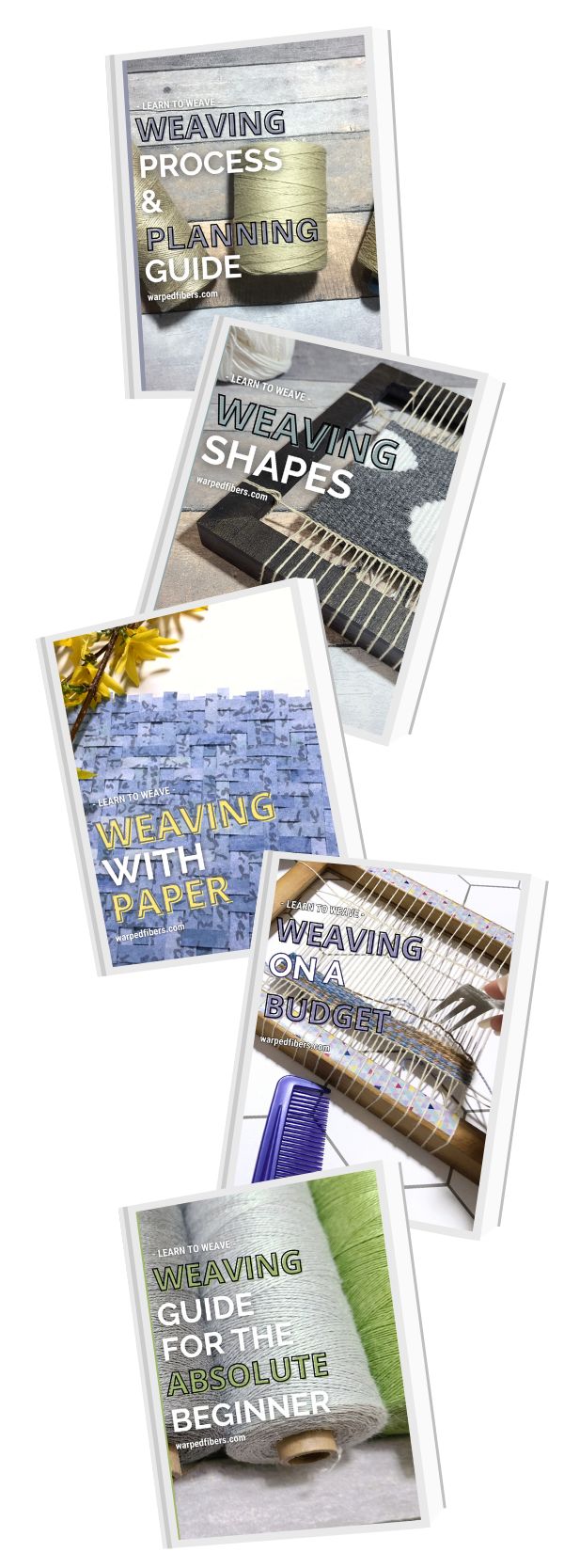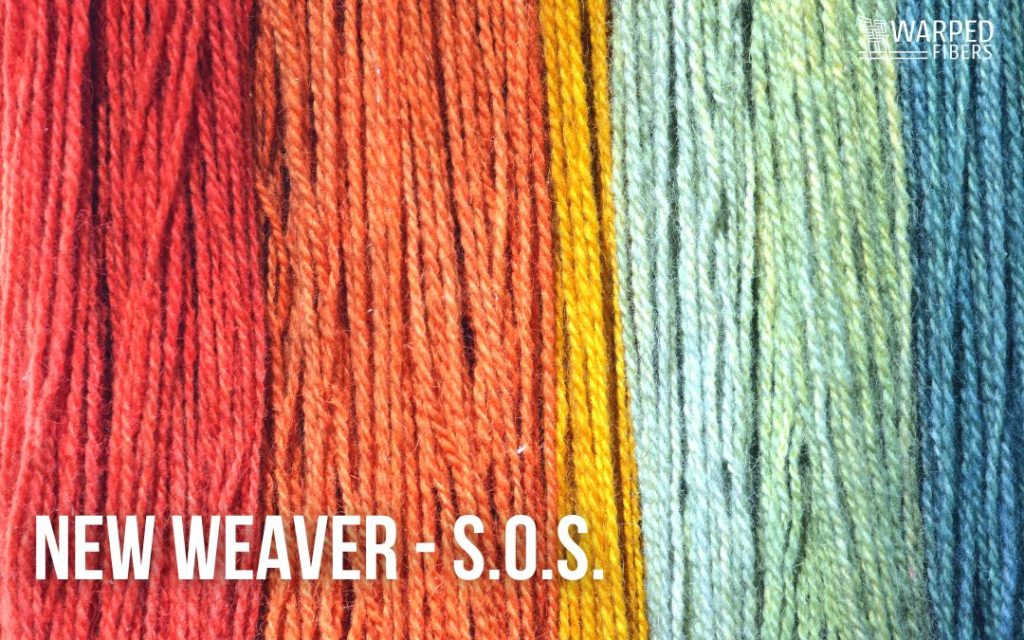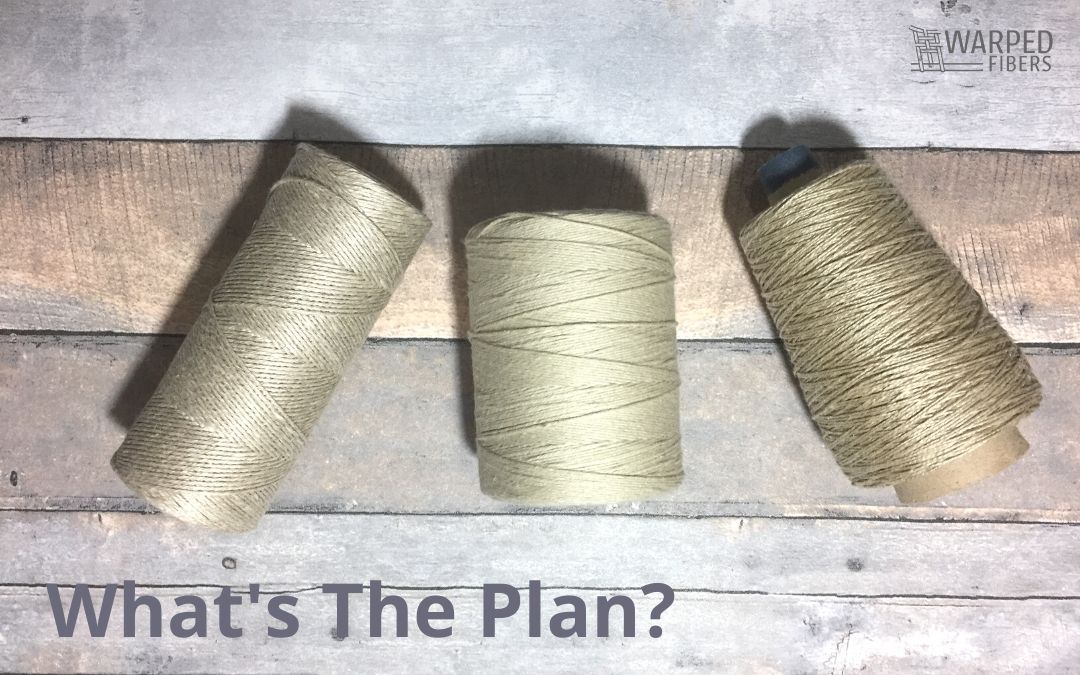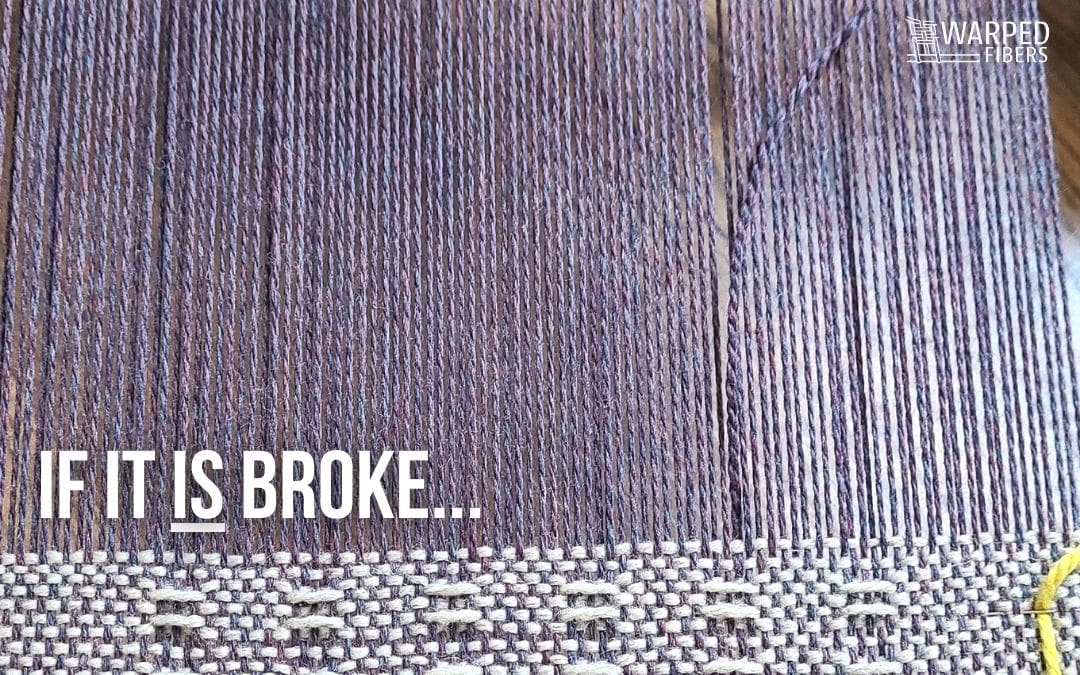I may be a bit biased when it comes to linen because much like my love for cotton, linen is a staple in my own studio.
That being said, it has a permanent home in my own weaving studio for a reason. Aesthetically, linen’s natural colors and natural shine work perfectly in my tapestries as warp and weft.
So what makes weaving with linen so special? Read on.
This page may contain affiliate links. If you purchase something through these links then I will receive a small commission – at no extra cost to you! Please read our DISCLAIMER for more info. Thanks for the support!
Types/cultivation
Linen is a natural bast fiber made from the flax plant (the same plant you get flax seeds from.) Bast fiber which also includes hemp, jute, and milkweed are fibers made from the inside of the straw-like stems of these plants. The anatomy of a bast fiber shows a harder outer layer, the phloem (this is the fiber layer), and a core.
Flax plants have two varieties: textile flax and linseed flax. These two types of flax are grown to either produce linen or to harvest the seeds for many other different uses. They have slightly different appearances and are also grown, harvested, and processed in different ways.
As I’m sure you can guess – we will be focusing on the textile flax.
In the field, flax can reach heights between 30” – 47” which means the fibers used to create linen are similarly long. They are also planted close together to encourage vertical growth over horizontal growth. Prior to harvesting, the flax plant grows delicate blue flowers.
Flax naturally comes in different colors depending on its growing situation. Minerals in the soil as well as where it is grown can affect the color of the finished linen, but it may wash out eventually.
Due to the makeup of the fibers, it also contains waxes, pectin, and gums. These things all can wash away over time making your linen yarn whiter and less dense. You also get two different types of fiber from linen processing. Line flax (long, luxurious, and shiny fibers) and tow flax (shorter and weaker fibers).
Flax grows well in moist and warm locations. It is harvested when mature, but not too mature in order to get the best quality fiber. Once the plant matures for a longer period it is no longer a good choice for fiber. Instead, the seeds can be harvested to be used or replanted next year.
To harvest the flax for linen it is always pulled from the ground and never cut. This is because it allows for the longest possible fibers. These stalks are then dried and after drying there are multiple time-intensive ways to extract the phloem from the rest of the plant.
If you are interested in reading more about how to turn flax into linen then I recommend Linen – From Flax Seed To Woven Cloth by Linda Heinrich. This book is a must for anyone interested in learning more about every aspect of flax and linen. It goes over the growing, harvesting, processing, dyeing the linen as well as linen weaving projects.
I also recommend The practical spinner’s guide: Cotton, Flax, Hemp by Stephanie Gaustad. This book is a great introductory book to these three cellulose fibers and is a good option if you want to learn more, but want something a little less in depth.
Uses
Linen is one of the most often used yarns for tapestry warp. This is because of its incredible strength and ability to hold up to the tension required by tapestry.
Learn more about tapestry HERE.
Beyond tapestry, linen is also often used for lightweight clothing and home goods. The word “linens” has become synonymous with sheets and towels even though traditionally they weren’t always made from linen.
In the next section, you can see why linen works well for all of these things.
Linen pros
Weaving with linen is great for anything that needs to be fast-drying. It is also incredibly absorbent. Linen is actually the most absorbent natural fiber! Towels are a fantastic example of this since you want your towels to absorb moisture but not hold onto it.
One of the most well-known properties of linen is how lightweight it is. If you think about summer-y linen pants then you can probably imagine their breezy nature made possible by the linen.
Linen is also a resilient fiber. If you are looking for something that will wear well then this could be a great option. When exposed to sunlight, linen does not discolor but instead reverts to the natural color of cellulose (white).
Just like cotton, linen is actually stronger when wet. This is another reason why it makes such a good option for towels or the like.
Very strong
If you are looking for a fiber with the greatest amount of strength then look no further than linen. For reference, linen has historically been used to create rope (alongside hemp and jute.)
You don’t make rope out of fragile materials.
Due to its strength, it makes a fantastic warp for anything, but especially tapestry since it requires such high tension. Also, if you don’t love the look of linen (…why?) then hiding behind your tapestry weft won’t be an issue.
Depending on the weaving you are creating, though, it may not be your ideal choice for warp on a pattern weave since it will be seen. Instead, find the strongest yarn that you can that works with what you are creating.
Naturally shiny
Unlike cotton that needs mercerization to be shiny, line linen is actually naturally shiny without any treatments. (Learn about mercerized cotton and other yarn treatments HERE). Tow linen, though, is less shiny because it is shorter and requires more twists when spinning than line linen.
Line linen is almost always wet spun which also adds to its shiny appearance. This means that it uses a spinning process that requires warm water to smooth and soften the fibers. Tow linen can be wet spun, but is usually dry spun. Dry spun tow linen is even more absorbent and has a “tooth” to it that can be a benefit for certain types of woven textile or rope.
Linen cons
Memory (stays crimped etc.)
If you have ever owned any linen clothing then you know how hard it can be to get wrinkles out!
Linen fibers have a memory and don’t always like to cooperate when you are trying to force them to do things. If you use linen in your weaving, but then unweave it – it will retain a crimped appearance where it went over and under your other yarn.
This also means that when purchasing it won’t be found in balls but instead only on cones or tubes. These help to tame linen’s wild nature.
Takes time to soften
Right off the cone linen isn’t always luxurious. While it has it in its nature to become a soft and beautiful fiber, until its been washed a few times, it will be stiff.
Not only does the linen naturally have waxes and other substances in the fiber, but oils are often used to more easily spin the flax into linen. All of these things make for a stiff yarn.
Linen can shrink after being washed so always make sure to either wash your linen yarns before weaving or make sure to do a sample and know the amount of shrinkage you have to account for. You can learn more about shrinkage HERE or in my ebook that you can purchase below (it has so much more in it too!)
Breaks down when dry
While linen is pretty resilient nothing is perfect.
Whereas it does very well when wet and when heat is applied, it likewise breaks down in low humidity situations. The linen fibers themselves can start to fray and break if they get too dry. Traditionally linen was woven in humid rooms for this reason. You don’t want your linen to be wet, though, because it is also prone to mildew.
Keep in mind that humidity can be bad for your loom, so be careful if you decide to work this way.
Generally speaking you should be fine in your regular home studio.
Can be costly (compared to cotton)
Linen is not the least expensive option you can choose when weaving, but not a lot compares to its strengths (and it’s strength!)
When compared to cotton, linen tends to be more expensive so if you are making a sample just to see if something works then I recommend sampling with a similarly sized cotton instead. This obviously doesn’t work if you need to test for linen shrinkage – in that case use the linen.
FYI, 8/4 cotton and 8/4 linen are actually different sizes. Learn about yarn sizes HERE.
Whatever the reason you are looking to weave with linen, it is a great material that has so many different uses. If you haven’t tried it yet or you are looking to get started with this versatile, but underappreciated fiber then check out some of my favorite linen yarns.
Bockens Linvarptrad Linen Rug Warp 8/2
References
Heinrich, Linda. Linen: from Flax Seed to Woven Cloth. Schiffer Publishing, 2010.
Gaustad, Stephenie. Practical Spinners Guide – Cotton, Flax, Hemp. Interweave Press Inc, 2014.
⇣ Love It? Share It! ⇣
You May Also Like


























